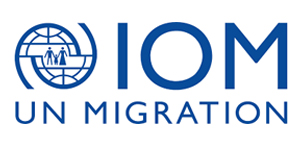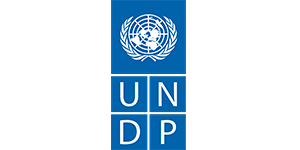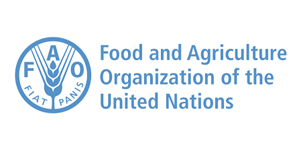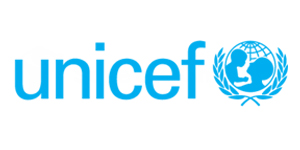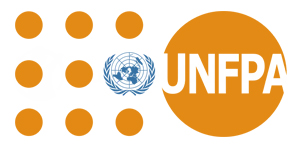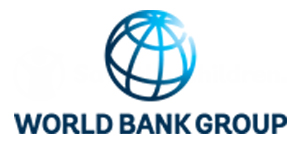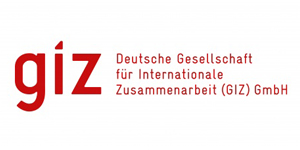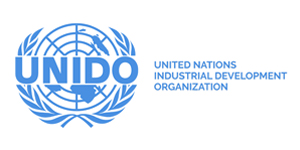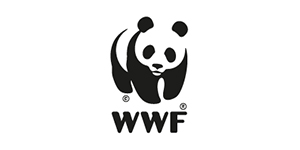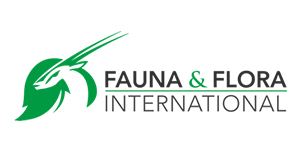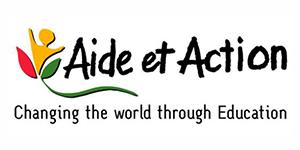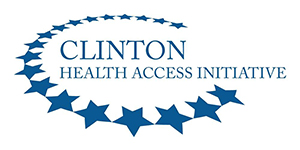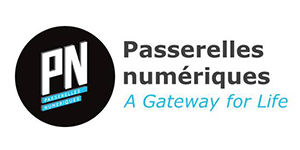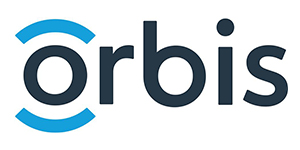Term of References
Consultant to do research on Public Spending for Agriculture in Vietnam for the period of 1986 – 2020
1. Background
Rosa Luxemburg Stiftung (RLS) is one of six major political foundations in the Federal Republic of Germany. Affiliated with the German Left party, Rosa-Luxemburg-Stiftung nurtures and promotes democratic socialism. We are striving to develop alternative approaches for transforming society toward a more united and just one. With this approach, we are facilitating political analysis, education, and dialogues, both in Germany and worldwide.
RLS currently has 26 offices worldwide. In over 80 countries, we are working with partners, including state agencies, academic institutions, and civil society organizations. From RLS Southeast Asia (RLS SEA) – Hanoi Office, we aim to contributing to ensure social, ecological and political rights for all as well as overcoming unequal power structures by promoting participatory decision making processes, political exchange and dialogue, leading to a fair distribution of wealth and resources and a healthy environment. To materialize this goal, we focus on three components including Component A - Social Justice, Component B – Social and Ecological Transformation, and Component C- Raising progressive Mekong voices in the ASEAN region. RLS SEA office in Hanoi is geographically working in five countries - Vietnam, Laos, Cambodia, Myanmar and Thailand with a broader view into the Southeast Asia region.
2. Rational
In 2021 food and agriculture will be at the top of the international political agenda as the UN is planning to hold its highly controversial UN Food Systems Summit (UNFSS) in September 2021. Many important players in civil society and political movements across the globe fear that the summit will not just provide a stage for “false green revolution solutions” but also compromise and weaken well established institutions such as the UN Committee on World Food Security (CFS).
In 2020 the Rosa-Luxemburg Food Sovereignty Program has published the study “False Promises: The Alliance for a Green Revolution” to showcase that the “Green Revolution” is not delivering what it promises and even worsens the situation for small-scale producers and other marginalized groups in most of the 13 main focus countries of this initiative. Adding to this activity, the Rosa-Luxemburg Food Sovereignty program wants to utilize the UNFSS as a political momentum and a hook to contribute to the debate around food systems from a left perspective.
In order to do so, Rosa-Luxemburg-Stiftung will publish an analysis on public spending for agriculture in 4 (four) states – we propose Tanzania and Zambia at the African continent and India and Vietnam at the Asian continent and how this spending has developed over time.
The working hypotheses are that on the one hand the public spending for agriculture went down – at least at the African continent and only a small number of countries fulfill the Maputo declaration objectives. (This might be different in the Asian countries with a much larger state allocation for the agriculture sector.) On the other hand, we assume a shift towards programs supporting the “Green Revolution” approach. Furthermore, the study wants to qualify public spending on agriculture to orient it towards more progressive food systems. In order to do so the paper will assess qualitatively the agricultural budgets according to 5 (five) dimensions: State sovereignty, Environmental sustainability, Transformation of agricultural systems, Target group small-scale food producers and women, Public research and extension services and use them as a basis to develop policy recommendations. RLS plans to cooperate with partners in the focus countries of this study.
In order to contribute the above publication, RLS SEA – Hanoi Office is recruiting one consultant/ a group of consultants to conduct the research on the topic of public spending for agriculture in the last 25 years (1986 – 2020) with detail analysis for period from 2011 to 2020 and how it links to the “Green Revolution” and major Agriculture policies in Vietnam.
3. Objectives of the study
- The main objective of the study is to analyse the public spending for agriculture sector in Vietnam and the changes over the period of 25 years and a more detail analysis for period from 2011 to – 2020. These are several sub-objectives as follow:
- To provide an overall picture of public spending for agriculture sector in the past 25 years.
- To provide a detailed analysis for the agriculture budgets and provide a rough overview of the overall spending on rural development (it could include direct public investment in infrastructure projects, job creation schemes, construction of regulated market structures for farm produce, etc.)
- To provide an analysis for Vietnam both on national and regional development strategies and development declarations in the area of agriculture and food and how the country does or does not implement these programs. (For the Southeast Asian context, it could be among others the APEC Policy Partnership on Food Security, the Niigata Declaration on APEC Food Security or its Road Map on Food Security towards 2020, etc.)
- To identify some of the reasons for the decisions by the state why they have dedicated public funding for certain programs and not others.
- The in-depth analysis is done in terms of numbers (money available and spent) but also analyses the portfolios and identifies how and for which activities the public money has been spent. The hypotheses are that (1) in many circumstances the agricultural budgets are disproportionately low compared to the overall public budget. (2) Most of the money was spent towards programs supporting the Green Revolution. (3) Financing programs of development cooperation by public and private foreign donors played a key and influential role (and possibly bound public resources of the state own funds). And (4) budgets were oriented towards reducing the diversity of crops through focusing on single crops such as maize or rice and wheat and in some cases qualifying agricultural products for export markets and not towards achieving healthy, diverse and accessible diets (in terms of costs) for local populations (e.g. to fulfil standards set in free trade agreements).
- Where applicable: The paper will analyse Farmer Input Subsidy Programs (FISP), as more and more money is invested in these programs by many countries. It will explain also what FISP encompass, not just subsidies for seed, fertilizer and pesticides but also related to agricultural infrastructure provided by the state (stock, state purchase, financing models). In addition, there are many donor governments and institutions like the FAO that are setting up similar programs.
4. Target Groups of beneficiaries/ readers
- Political decision makers especially in Germany and in the “case countries” but also elsewhere
- Media to report more profoundly on UN Food Systems Summit
- NGOs and other civil society organisations, academics, and researchers in the global North and South to make use of the findings
5. Methodology, deliverables and guiding questions for the “case-study chapters”
5.1 Methodology
- Desk research/ Literature review – evaluating available data regarding public funding in the respective country, analysis of available statistics in a quantitative approach (e.g. Government data, World Bank and others)
- Qualitative research: Semi-structure interviews and/ or group discussion with different actors such as government representatives, public servants, scientists, civil society organisations, farmer/peasant organisations and affected people on the ground (where appropriate)
5.2 Deliverables – Vietnam Case Study
- A research report, maximum 13.000 words, in English and Vietnamese
- Report summary (around 1000 words), in English and Vietnamese
- A presentation in power point format, in English
- Scope: the research paper containing the following, but not limited to:
- An abstract/ summary of the key findings (max 2 pages)
- Precise answers to the questions and content requested below.
- A summary of the interviews, highlighting strong quotes
- An overview of existing data and budget analysis (exists publicly usually both on national level as well as on international level (World Bank, IFPRI etc.)
- An analysis and answers to the guiding questions (see below)
- Provide quantitative data and facts that can be converted to charts and the like
- A list of interviewees, including contact details and information whether we can quote a person by name or should treat them anonymously
- Provide trustworthy references (APA format)
Where applicable: Photographs that illustrate the main findings of the research and a few information regarding the specific photographs such as: where was it taken, who or what is visible and name of the copyright holder
Please note: the final case studies for the publication will be written by Rosa-Luxemburg-Stiftung
Proposed guiding questions
Please note: it is crucial that the consultant provides answers to these questions/topics!
- Very short overview: situation of food and agriculture in the country: hunger figures for the last 25 years (absolute and in relation to the population, absolute number and percentages for women, children and men), poverty figures for the last 25 years (absolute and in relation to the population, absolute number and percentages for women, children and men), role of agricultural sector in terms of employment (distribution according to wage labour, subsistence farming and other), contribution to GDP, areas under agriculture cultivation, import and export of agricultural produce, development of main crops planted over time, population in rural and urban areas and its development over the last 25 years.
- Public budget for agriculture in the country (including official development assistance from donor governments): How has the agricultural budget changed in the last 25 years? How much money does the agricultural budget receive in absolute figures? What is the percentage of the agricultural budget in relation to the total budget and how has this changed over time? Furthermore, provide a rough overview of the overall spending on rural development in the country which includes direct public investment in infrastructure projects (such as roads, irrigation schemes), job creation schemes, construction of regulated market structures for farm produce, etc.
- How much money in the agricultural budget is money from donors? How has this developed over time? Can the state itself decide how it wants to spend the donor money or does the money from the donors come with special conditions? For instance, can the money only be used for breeding hybrid seed and not farmers seed, is the money dedicated for promoting cash crops instead of staple crops, etc.
- How much money from the agricultural budget goes into programs to support the Green Revolution? How has this changed in absolute numbers and in relative terms over the past 25 years? Programs of support are for example: Farmer Input Subsisdy Pograms (FISP), programs or subsidies to promote synthetic pesticides and fertilizers, programs or subsidies to promote hybrid seed or GMOs, establishment of agro dealer networks or other means to distribute the Green Revolution package, public research on hybrid seed. Does the state provide any financial instruments for farmers to support Green Revolution programs? For instance, does the state provide credits? If yes, how does it work? What are the terms? Please note: the consultant should provide a brief overview how all of these programs are working what they do encompass in detail.
- How are the target groups of development programs defined and reached? Which groups are in fact able to access and benefit from the programs (regional scope, preconditions such as capital availability etc., which classes are considered, which not? How farm units are defined (e.g. small-scale food producers, family farms, commercially viable farms, what about land poor households etc.)
- What is the share on own staff and resources costs, that remains with the states bureaucracies and extension officers and never reaches the target groups?
- Is the spending and are programs in line with national and regional development strategies and development declarations in the area of agriculture and food?
- Agricultural policies in the country: What are the main political initiatives in agriculture, is there any FISP programme in place, any PPPs? Which effects?
- Are there any longer-term visions or programs of the government for the development of the agricultural sector? Which one?
- What are some of the reasons for potential shifts in the agriculture budget and for change in focus?
- What role do external actors play in this? These include donor governments, official development cooperation, the World Bank, IMF and others. Are there any conditions, for example, that development funds can only be used for certain programs to promote the Green Revolution? How far are the development funds still linked to structural adjustment programs? This would de facto limit the sovereignty of states.
- How far are the agricultural budgets oriented towards fulfilling standards set in trade agreements with the EU or other donor countries?
- In the opinion of actors from critical civil society, which approaches/programs should the state instead support in order to transform the agricultural sector, both financially and politically?
- What role can extension services, farmer managed seed, more public research in agriculture and other things play in the transformation?
Please note: In order to ensure comparability between the country studies and to be able to make qualitative statements, the respective agricultural budgets are to be classified on the basis of 5 dimensions using different indicators per dimension. The paper must include in these five dimensions below:
- State sovereignty: can the states themselves decide on the allocation of funds in the agricultural sector, or are any development aid funds tied to certain conditions. Indicator: percentage of agricultural spending in the total of GPD, percentage of agriculture development fund from develop aids. Is there one donor, which provides more than 5% of the total budget?
- Environmental sustainability: Are public agricultural investments geared towards ensuring environmental sustainability by protecting natural resources and the environment? Development of biodiversity in the fields. Are traditional crops increasingly replaced by a few staple crops such as maize, wheat or rice? Indicators: Share of the agricultural budget for initiatives/programs dedicated to the protection of natural resources and the environment. Share of a crop in the total available agricultural area and its development in the last ten years (2010-2020).
- Transformation of agricultural systems: Are public investments geared towards transforming agricultural systems by reducing the application of synthetic fertilizers and synthetic pesticides and at the same time improving yields? Indicators: Use of synthetic fertilizers and pesticides, development of yields for certain staple crops over time.
- Target group small-scale food producers and focus on women: Are public investments explicitly geared to small-scale food producers and do they focus on women as target group, too? Indicators: changes of number of small-scale farmers during the period of research, niche market for small-scale farmer, climate-smart agriculture. Proportion of programs that explicitly identify small-scale food producers as target groups. In contrast to programs that target commercial farmers or larger farms. Proportion of programs that explicitly identify women as target group.
- Public research and extension services: Are public investments designed to promote public funded research and extension services. Indicators: Share of the agricultural budget for public research and extension services.
6. Requirements
The research task is designed for 15-20 working days
Necessary qualification:
- Proven experience in research on the topic of Agriculture Development, Agriculture Economics, Agriculture Policy, Political Ecology or any related topics.
- At least 5 years of experiences doing qualitative and/ or quantitative research in the field of Social Sciences, Economic Development, Political Sciences.
- A strong network in Agriculture sector and high-level of decision makers body in Vietnam.
- Ability to write international- standards research report/ article in both English and Vietnamese (proven by a track of record of publications).
- Ability to communicate well in both verbal and written form of English and Vietnamese.
- A flexible and can-do-it attitude towards challenges that might arise during the consultant/ research process.
7. Languages
The report will be written in English and Vietnamese, then it will be translated to German for publications.
8. Publishers: Rosa-Luxemburg-Stiftung
9. Rough Timeline
- By 25th of November 2020: Finalising ToR
- By 20th of December 2020: Case Country have been selected and country researchers identified
- By 26th of December 2020: Researchers awarded and contracts signed
- By end of February 2021: First version of research deliverables from the country case studies have been submitted
- By mid of March 2021: Feedback has been provided to country case studies
- By end of March 2021: Final research deliverables of the country case studies have been submitted
- By mid of April 2021: First draft of the study available
- By end of April 2021: Feedback provided
- By end of May 2021: Study finalized
- By end of June 2021: Layout design finalized
- By mid - August 2021: Translation available
- By end of August final study available in German, English and one more language
10. Application
RLS SEA would like to invite interested consultant team/ organization to submit their application following international standards in English language including:
- Short research design/ proposal to propose how the consultant is planning to conduct the research (maximum 2 pages).
- CV of consultant/ team members with at least two references.
- Financial plan, including:
- No of working days according to the timeline above
- Estimated words of the study
- Proposed budget of the study (excluding PIT or VAT)
- Organizational profile (if any).
Application deadline: 15th December 2020
Please submit your application to Ms. Hoang Hao Tra My, Project Manager RLS SEA via the email address: tramy.hoang@rosalux.org
Inquiries are only accepted before the application deadline. Only short-listed applicants will be contacted.
-
Việc làm tại các tổ chức phi chính phủ - NGO Recruitment
- Website: https://ngorecruitment.org/
- Instagram: https://www.instagram.com/ngorecruitment_vn
- LinkedIn: https://www.linkedin.com/in/ngorecruitment
- Group: https://www.facebook.com/groups/VieclamPhichinhphu
- Youtube: http://bit.ly/Youtube_NGORecruitment

